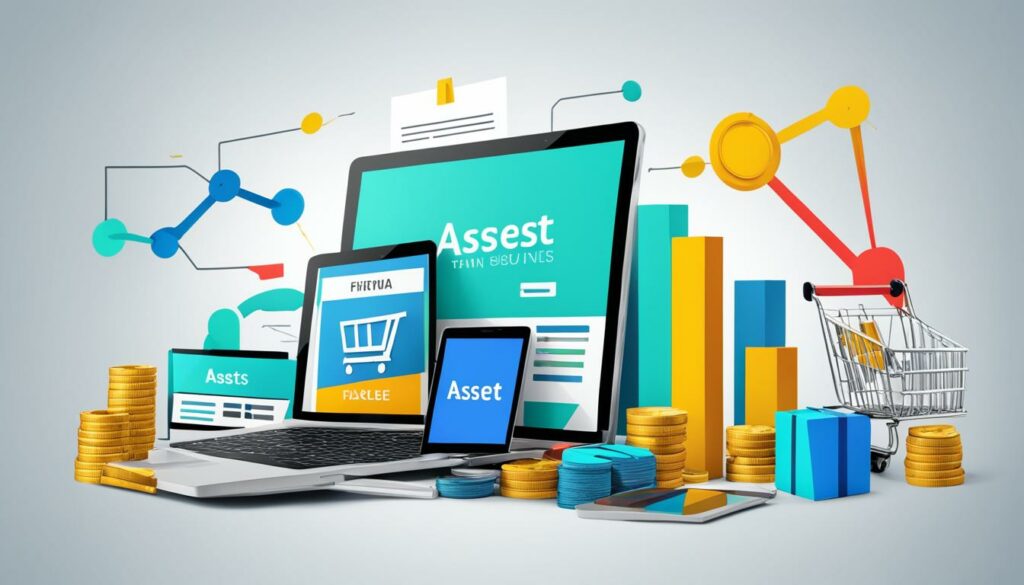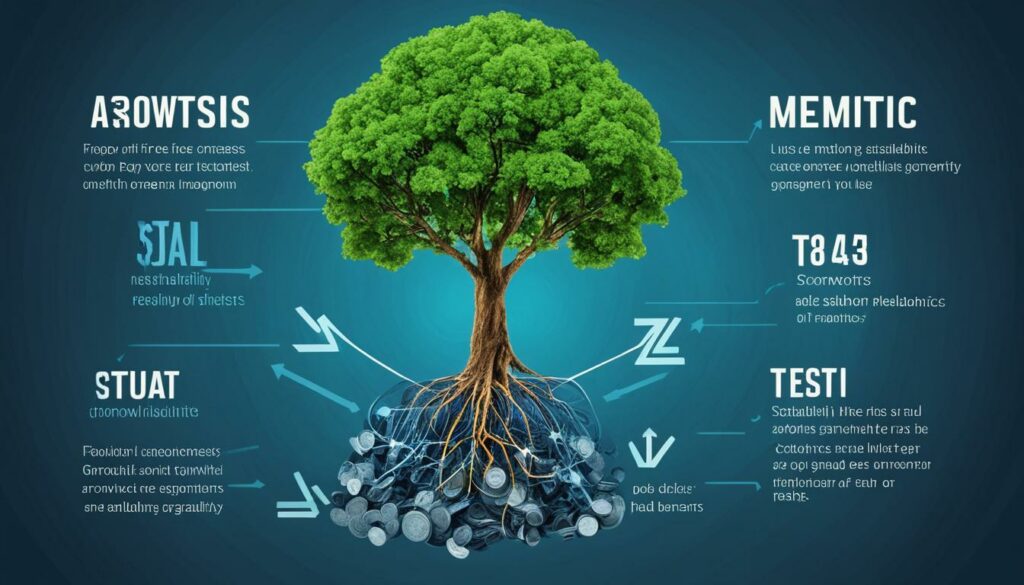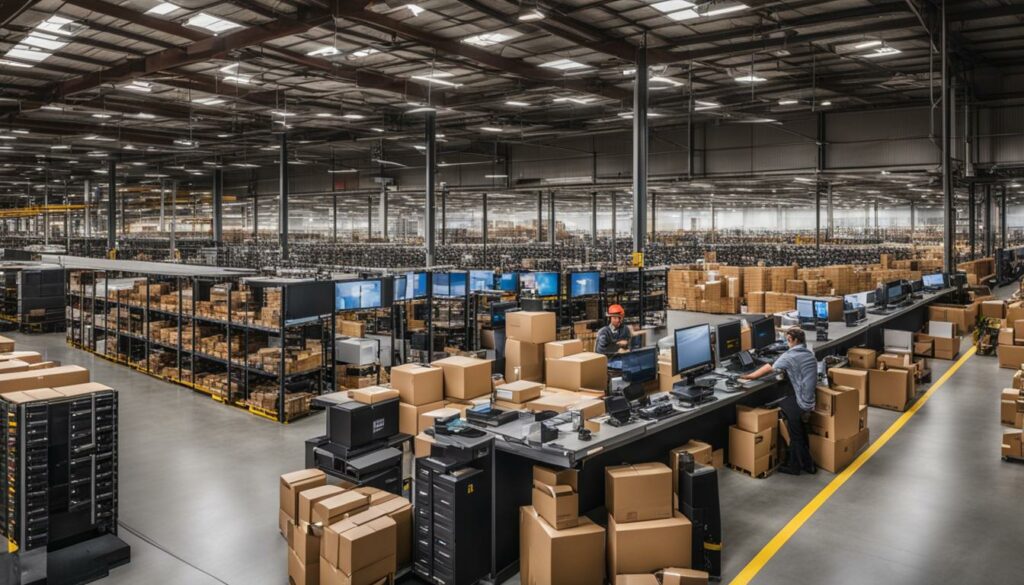Fixed assets are essential components of any ecommerce business, providing the foundation for long-term growth and success. In this article, I will explain what fixed assets are in the context of ecommerce and why they play a critical role in driving business operations and strategies.
Fixed assets, also known as non-current assets, are tangible items that a company acquires and intends to use for more than one year. In the realm of ecommerce, fixed assets can include property, plant, and equipment (PPE), such as office spaces, warehouses, machinery, and computers. These assets are the backbone of an ecommerce business, enabling smooth and efficient operations to produce and deliver products or services.
Having a strong understanding of fixed assets is crucial for ecommerce businesses to accurately reflect their financial health and make informed decisions. It involves properly accounting for depreciation, investing in asset management strategies, and aligning fixed asset investments with customer behavior and market demands.
Key Takeaways:
- Fixed assets are tangible items that a company acquires and plans to use for more than one year in ecommerce.
- Examples of fixed assets in ecommerce include office spaces, warehouses, machinery, and computers.
- Proper management of fixed assets is crucial for maximizing their value and minimizing expenses.
- Understanding customer behavior can help businesses make informed decisions about their fixed asset investments.
- Fixed assets can be related to various metrics and financial indicators to assess the efficiency and profitability of an ecommerce business.
Definition of Fixed Assets
Fixed assets, also known as non-current assets, are items that a company owns and intends to use for an extended period. These assets are different from current assets, which are short-term assets that are expected to be converted into cash within a year. In the context of ecommerce, fixed assets can include buildings, vehicles, furniture, and computer equipment. They are essential for the smooth operation and long-term growth of an ecommerce business.
Examples of Fixed Assets in Ecommerce
Here are some examples of fixed assets commonly found in the ecommerce industry:
| Asset | Description |
|---|---|
| Buildings | Ecommerce businesses often require warehouses, distribution centers, or office spaces to store and manage their inventory and operations. |
| Vehicles | Delivery vans, trucks, or other transportation vehicles are necessary for ecommerce businesses to transport goods to customers. |
| Furniture | Office furniture, fixtures, and equipment support the day-to-day operations of an ecommerce business, providing a comfortable and efficient working environment. |
| Computer equipment | Computers, servers, and other IT infrastructure are crucial for ecommerce businesses to manage their online platforms, inventory systems, and customer data. |
These fixed assets are integral to the operations of an ecommerce business, enabling efficient production, storage, and delivery of products or services.
Key Differences Between Fixed Assets and Current Assets
To better understand the concept of fixed assets, it’s important to highlight the differences between fixed assets and current assets in ecommerce:
- Fixed assets: Owned for an extended period (>1 year), used for business operations, and not easily converted into cash.
- Current assets: Expected to be converted into cash within a year, used for day-to-day operations, and usually in the form of inventory, accounts receivable, or cash equivalents.
By differentiating fixed assets from current assets, ecommerce businesses can effectively manage their financial resources and optimize their asset utilization.

Depreciation of Fixed Assets
Most fixed assets, except for land and real estate, tend to depreciate in value over time. Depreciation refers to the decrease in the value of an asset due to wear and tear or obsolescence.
It is crucial for ecommerce businesses to account for depreciation in their financial statements. By doing so, they can accurately reflect the value of their fixed assets over time, prevent imbalances in the company’s balance sheet, and provide a more accurate picture of the company’s financial health.
Proper depreciation calculations help businesses make informed decisions about the utilization and replacement of their fixed assets. It ensures that assets are not overvalued on the balance sheet and helps maintain transparency in financial reporting.
“Depreciation is a key concept in accounting that assists businesses in assessing the true value of their fixed assets and making informed financial decisions.” – Financial Analyst
By recognizing the decrease in value over time, businesses can plan for necessary asset upgrades or replacements, ensuring they have the resources to support their operations and maintain competitive advantage in the ever-changing ecommerce landscape.
Methods of Depreciation Calculation
There are multiple methods for calculating depreciation, each with its own advantages and applications. The most common methods include:
- Straight-line method: This method evenly spreads the cost of the asset over its useful life.
- Declining balance method: This method allocates a higher depreciation expense in the early years of an asset’s life and gradually decreases it as the asset ages.
- Units of production method: This method calculates depreciation based on the asset’s usage or output, considering the wear and tear caused by production activities.
Choosing the appropriate depreciation method depends on various factors, such as the nature of the asset, its expected useful life, and the desired accuracy of financial reporting.
Importance of Fixed Assets in Ecommerce
Fixed assets are fundamental to the success of ecommerce businesses, playing a vital role in their operations and long-term growth strategies.
The utilization of fixed assets like computers, machinery, and warehouses is crucial for ecommerce businesses to produce and deliver their products or services efficiently. These assets enable streamlined processes and contribute to the smooth operation of the business.

In addition to supporting day-to-day operations, fixed assets provide long-term income and contribute to the overall value of the business. The possession of tangible assets demonstrates stability and reliability, which can attract external investment and potential buyers in the future.
“Fixed assets are not mere expenses but valuable assets that contribute to the growth and sustainability of an ecommerce business.”
By having essential fixed assets in place, such as warehouses for inventory storage and machinery for production, ecommerce businesses can demonstrate their ability to scale and meet increasing customer demands. This, in turn, enhances their competitiveness in the market and opens doors for expansion opportunities.
Furthermore, fixed assets provide a solid foundation for strategic decision-making. For instance, having a modern and efficient IT infrastructure can support the implementation of advanced technologies like artificial intelligence and automation, enabling businesses to stay ahead of the curve.
In summary, fixed assets are critical for the success of ecommerce businesses. They not only support day-to-day operations but also contribute to long-term growth, attracting investment and providing a solid foundation for strategic decisions.
Strategies to Improve Fixed Asset Management
Effective management of fixed assets is crucial for maximizing their value and minimizing expenses in ecommerce businesses. By implementing the following strategies, businesses can ensure that their fixed assets are utilized efficiently, minimize downtime, and prevent unnecessary expenses:
- Conduct regular asset audits: Regularly reviewing and auditing fixed assets helps businesses maintain an accurate record of their assets, identify any discrepancies, and ensure compliance with regulatory requirements. It also allows businesses to assess the condition and performance of their assets, enabling timely maintenance and replacement decisions.
- Use asset tracking software: Implementing asset tracking software enables businesses to efficiently monitor and manage their fixed assets. This software provides real-time visibility into asset location, status, and maintenance history. It streamlines asset tracking, reduces manual errors, and improves overall asset management efficiency.
- Develop maintenance schedules: Establishing proactive maintenance schedules for fixed assets helps prevent unexpected breakdowns and extends their lifespan. Regular maintenance activities, such as equipment inspections, calibration, and servicing, can help identify and address potential issues before they turn into costly repairs or replacements.
- Implement proper depreciation methods: Applying appropriate depreciation methods ensures accurate valuation and accounting of fixed assets over their useful life. Different depreciation methods, such as straight-line, declining balance, or units-of-production, may be suitable for different assets. Choosing the right method helps businesses align their financial statements with the actual value and usage of their fixed assets.
By implementing these strategies, ecommerce businesses can optimize their fixed asset management, enhance operational efficiency, and make informed decisions regarding asset investments and replacements. Efficient management of fixed assets contributes to a company’s financial stability and long-term growth.
Sample Depreciation Schedule for a Machinery Asset:
| Year | Value at Beginning of Year | Depreciation Expense | Accumulated Depreciation | Value at End of Year |
|---|---|---|---|---|
| 1 | $100,000 | $20,000 | $20,000 | $80,000 |
| 2 | $80,000 | $20,000 | $40,000 | $60,000 |
| 3 | $60,000 | $15,000 | $55,000 | $45,000 |
| 4 | $45,000 | $15,000 | $70,000 | $30,000 |
| 5 | $30,000 | $10,000 | $80,000 | $20,000 |
Implementing regular asset audits, utilizing asset tracking software, developing maintenance schedules, and applying proper depreciation methods are crucial strategies for effective fixed asset management in ecommerce businesses. These strategies contribute to maximizing asset value, minimizing expenses, and ensuring long-term business sustainability.
Customer Behavior and Fixed Assets
While customer behavior may not directly relate to fixed assets in ecommerce, it is important to consider how customer preferences and demands can impact the selection and utilization of fixed assets. Understanding customer behavior can help businesses make informed decisions about their fixed asset investments.
Influence on Fixed Asset Selection
Customer behavior plays a significant role in determining the types of fixed assets that an ecommerce business should invest in. By analyzing customer preferences, businesses can identify trends and patterns that indicate the need for specific assets. For example, if customers prefer online shopping over physical stores, the business may need to allocate more resources towards enhancing their e-commerce platform, logistics operations, and digital infrastructure.
Furthermore, customer behavior can also guide decisions related to physical infrastructure. For instance, if customer demand for a particular product or service increases, the ecommerce business may need to invest in additional warehouse space or expand their fulfillment centers to meet the rising demand.

Utilization and Optimization
Understanding customer behavior enables ecommerce businesses to optimize the utilization of their fixed assets. By analyzing customer data and feedback, businesses can identify areas where assets are underutilized or misaligned with customer needs and make necessary adjustments. This could involve reconfiguring warehouse layouts, upgrading technology systems, or improving order fulfillment processes.
“Customer behavior insights help ecommerce businesses align their fixed asset investments with changing customer preferences and demands.”
Impact on Long-Term Strategies
By considering customer behavior, ecommerce businesses can develop long-term growth strategies that take into account the evolving needs and expectations of their target audience. For example, if customers are increasingly demanding faster delivery options, an ecommerce business may need to invest in transportation assets such as delivery vehicles or establish partnerships with third-party logistics providers.
Furthermore, customer behavior insights can guide businesses in exploring new market segments or launching innovative products or services. By anticipating and addressing customer preferences, ecommerce businesses can position themselves competitively in the market and drive sustainable growth.
Relation of Fixed Assets to Other Metrics
Fixed assets in ecommerce play a critical role in the success of a business. These assets, such as warehouses, machinery, and computers, enable companies to operate efficiently and generate long-term income. However, it is essential for businesses to assess the performance and value of their fixed assets through various metrics and financial indicators. By evaluating how fixed assets contribute to the overall profitability and efficiency of the business, ecommerce companies can make informed decisions to optimize their asset management strategies.
One vital metric that businesses can use to evaluate the effectiveness of their fixed assets is the return on assets (ROA). ROA measures the efficiency of an ecommerce business in utilizing its assets to generate profits. By comparing the net income generated by the company with its total assets, ROA provides insights into how effectively the fixed assets are being used to generate income.
Another relevant metric is the asset turnover ratio, which measures the company’s ability to generate sales in relation to its total assets. This ratio is calculated by dividing the net sales by the average total assets. A higher asset turnover ratio indicates that the company is utilizing its fixed assets efficiently to generate revenue.
The net profit margin is another important metric that can be related to fixed assets. This metric measures the percentage of revenue that remains as net profit after deducting all expenses, including depreciation of fixed assets. A higher net profit margin indicates that the company is effectively managing its expenses, including the maintenance and depreciation costs associated with its fixed assets.
Monitoring these metrics allows businesses to gain insights into the effectiveness of their fixed asset management strategies. By identifying areas for improvement and optimizing the utilization of their fixed assets, ecommerce companies can enhance their profitability and operational efficiency.
| Metric | Definition | Formula |
|---|---|---|
| Return on Assets (ROA) | Measures the efficiency of assets in generating profits | Net Income / Total Assets |
| Asset Turnover Ratio | Measures the ability to generate sales in relation to total assets | Net Sales / Average Total Assets |
| Net Profit Margin | Measures the percentage of revenue that remains as net profit after deducting expenses | (Net Income / Net Sales) x 100 |
By analyzing these metrics alongside the performance of their fixed assets, ecommerce businesses can make data-driven decisions to improve their overall financial health, optimize their fixed asset utilization, and ensure sustainable growth in the competitive ecommerce landscape.

Challenges and Considerations in Fixed Asset Management
Managing fixed assets in the ecommerce industry comes with its own unique set of challenges. Accurately valuing and accounting for fixed assets is a crucial consideration for businesses. It is essential to determine the correct value of assets, considering factors such as depreciation, market fluctuations, and technological advancements.
Another challenge in fixed asset management is effectively managing depreciation. As assets age and get subject to wear and tear, their value decreases over time. Ecommerce businesses must have robust depreciation policies in place to ensure accurate financial reporting and reflect the true value of their fixed assets.
Furthermore, keeping track of changes in technology and market demands is vital for successful asset management. The ecommerce industry is highly dynamic, with new technologies constantly emerging and market demands shifting. Businesses must stay updated with industry trends and regulations to make informed decisions about their fixed asset investments and replacements.
FAQ
What are fixed assets in ecommerce?
Fixed assets in ecommerce refer to tangible items that a company acquires and plans to use for more than one year. These assets can include property, plant, and equipment such as office space, warehouses, machinery, and computers.
What is the definition of fixed assets?
Fixed assets, also known as non-current assets, are items that a company owns and intends to use for an extended period. Examples of fixed assets in ecommerce can include buildings, vehicles, furniture, and computer equipment.
How do fixed assets depreciate?
Most fixed assets, except for land and real estate, tend to depreciate in value over time. Depreciation is the decrease in value of an asset due to wear and tear or obsolescence. Ecommerce businesses account for depreciation in their financial statements to accurately reflect the value of their fixed assets over time.
What is the importance of fixed assets in ecommerce?
Fixed assets play a crucial role in ecommerce businesses as they provide long-term income and support operations by facilitating smooth and efficient processes. They are essential for production and delivery, and can also attract external investment or facilitate the sale of the business by demonstrating its value and potential for future growth.
What strategies can improve fixed asset management?
Ecommerce businesses can implement various strategies to improve fixed asset management, such as conducting regular asset audits, using asset tracking software, developing maintenance schedules, and implementing proper depreciation methods. These strategies help ensure efficient utilization of fixed assets, minimize downtime, and prevent unnecessary expenses.
How does customer behavior impact fixed assets in ecommerce?
While customer behavior may not directly relate to fixed assets in ecommerce, understanding customer preferences and demands can impact the selection and utilization of fixed assets. For example, changing customer preferences towards online shopping may require ecommerce businesses to invest in additional warehouse space or upgrade their e-commerce platform.
How are fixed assets related to other metrics and financial indicators?
Fixed assets in ecommerce can be related to various metrics such as return on assets (ROA), asset turnover ratio, and net profit margin. These metrics assess the efficiency and profitability of an ecommerce business by measuring how well the company utilizes its fixed assets to generate income.
What are the challenges and considerations in fixed asset management?
Fixed asset management in ecommerce comes with challenges such as accurately valuing and accounting for fixed assets, managing depreciation, and keeping track of changes in technology and market demands. Staying updated with industry trends and regulations is important to ensure proper management of fixed assets and informed decision-making.
